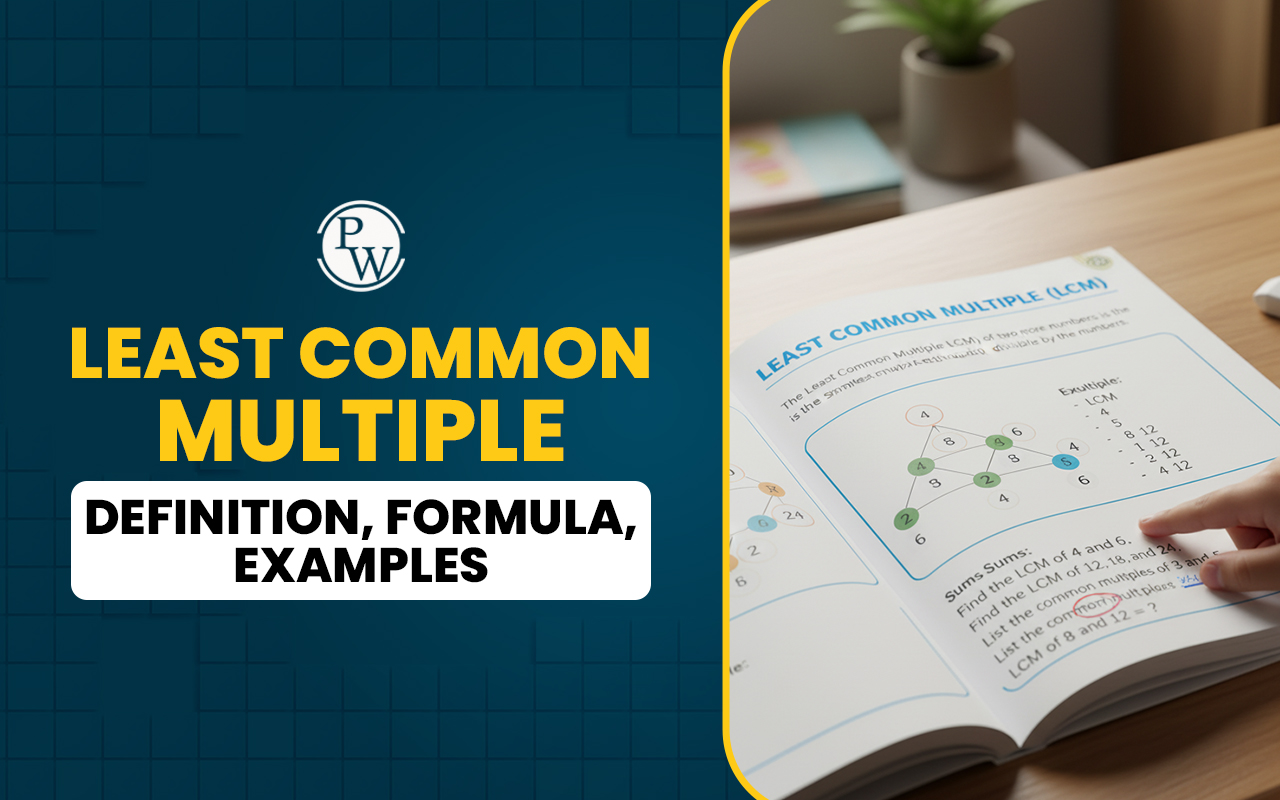
Rote Memorization: We have all faced it: the challenge of trying to remember important facts, formulas, or vocabulary that just don’t seem to stick. Sometimes, no matter how hard you try, the information feels impossible to retain. This is where rote memorization can become your most valuable tool.
Rote memorization, though often dismissed as outdated or tedious, remains one of the most effective ways to lock essential knowledge into your memory. It provides the foundation for recalling key facts quickly and can pave the way for deeper understanding.
In this blog, we will learn how rote memorization works, why it is important, and how you can use it effectively to enhance your learning. Let’s begin.
[video width="1920" height="1080" mp4="https://www.pw.live/exams/wp-content/uploads/2024/12/Curious-Jr-Ad-3-1-1.mp4"][/video]What is Rote Memorization?
Rote memorization is a simple learning method where you repeat information over and over until you can recall it without effort. It’s like training your brain to store facts through repetition, making them easy to remember whenever you need them.
The purpose of rote memorization is to make recalling basic knowledge fast and automatic. For example, when students practice spelling a word repeatedly, they eventually write it correctly without thinking too hard. This process helps in the short term and ensures the information stays in memory for a longer time.
This method is especially useful for learning certain types of information, such as:
- Lists or Sequences: Remembering items in a specific order, like the months of the year, days of the week, or steps in a process.
- Vocabulary Building: Repeatedly practicing new words to strengthen language skills and improve fluency.
- Key Facts in History or Science : Memorizing important dates, events, or definitions to build a solid foundation for deeper learning.
Benefits of Rote Memorization
Rote memorization is useful in everyday life, especially when you need to remember something quickly. It may not always help with understanding, but it works well when recalling facts is the main goal. Here are some of its key benefits:- Quick Recall: Rote memorization instantly lets you remember facts, numbers, or formulas. This is especially helpful during exams or job-related tasks requiring fast answers.
- Saves Time: Instead of figuring something out repeatedly, memorizing it saves effort. For example, knowing a phone number or a math formula saves time when needed.
- Engages the Brain: Practicing memorization keeps your brain active and sharp. Studies even show it can improve brain function, especially in older adults.
- Preserve Culture: Before writing existed, people used memorization to pass down stories, traditions, and important knowledge. Even today, it’s a way to keep cultural and historical knowledge alive.
Disadvantages of Rote Memorization
While useful, rote memorization has downsides if used too much. Here’s why it doesn’t always work well:- No Deeper Understanding: Memorizing facts doesn’t explain why they are true. For example, a student might know 3+2= 5, but if they don’t understand how addition works, they may struggle with similar problems.
- Forgets Quickly: If you only memorize facts without using them often, you may forget them quickly. This is why students often forget material after cramming for a test.
- Not Useful for Complex Ideas: Rote learning focuses on single facts, not how they connect. For example, memorizing historical dates doesn’t help you understand the events behind those dates.
- Can Be Boring: Repeating the same thing repeatedly can feel dull, making it hard to stay motivated.
Simple Strategies to Improve Rote Memorization
Rote memorization works best when combined with simple teaching techniques. Here are a few easy methods to help students learn and retain:
Spaced Repetition
Spaced repetition is a method where students review information multiple times over increasing intervals to help it stick in their long-term memory. At the beginning, students review the material frequently, such as several times a day.
As they become more confident, the intervals between reviews are gradually extended. For example, when teaching the months of the year, students could recite the months three times during the first lesson.
Throughout the first week, they review the months daily, then every other day in the second week, and once a week after a month. This steady, systematic approach helps reinforce memory by preventing forgetting and improving recall over time.
Flashcards
Flashcards are simple but effective tools for memorization. One side of the card contains a question, prompt, or problem, while the other side has the correct answer. Students review a set of flashcards, trying to answer each question, and separate the ones they get wrong for extra practice.
For example, students learning country capitals can use cards that say the country name on one side, like "France," and its capital, "Paris," on the other. Students can use flashcards independently, in pairs, or in groups.
They can also combine flashcards with spaced repetition, reviewing the cards more frequently at first and less often as they master the material.
Copy-Cover-Compare
Copy-Cover-Compare is a step-by-step method that helps students memorize facts or definitions by writing, testing, and checking their work. The process starts with students writing the correct information in a column.
For example, in learning multiplication, they write "7 x 8 = 56" in one column. Next, they cover the first column and try to recall the answer by writing it in a second column, such as "7 x 8 = ___." Finally, they compare the two columns to check for accuracy.
If their answer is incorrect, they repeat the process until they can consistently recall the correct information. This strategy is particularly useful for learning spelling, math facts, or vocabulary.
Mnemonics
Songs and Rhymes
Songs and rhymes use rhythm and melody to make memorization engaging and fun. The combination of music and repetition helps students remember information more easily.
For example, students can learn the alphabet by singing the "ABC Song" or memorize the planets of the solar system using the rhyme, "My Very Educated Mother Just Served Us Nachos," which stands for Mercury, Venus, Earth, Mars, Jupiter, Saturn, Uranus, and Neptune. Similarly, multiplication tables can be taught through catchy tunes that repeat the facts in a memorable way.
Games and Quizzes
Games and quizzes are interactive methods that turn memorization into a fun activity. For instance, to help students learn the periodic table, you can organize a memory game where students match elements to their symbols, such as Hydrogen (H) or Oxygen (O).
Another example is a timed math quiz where students solve as many problems as possible within a minute.
Helping Students Who Struggle with Rote Learning
Some students find rote learning difficult due to limited cognitive capacity or the time needed to transfer information into long-term memory. Here are strategies to support them effectively: Provide Reference Sheets: Offer tools like multiplication charts or vocabulary lists to assist students during practice. For example, a multiplication chart can help a student solve problems while reinforcing memorization through repeated use. Encourage Regular Practice: Keep a collection of materials such as flashcards or worksheets readily available. Encourage students to practice consistently, focusing on areas where they need improvement. For instance, flashcards with spelling words or math problems can help reinforce memory through repetition. Track Progress: Help students set small, achievable goals and monitor their success. For example, a student can aim to memorize five new words each week, using a progress chart or journal to track improvements and stay motivated. Focus on Understanding in Assessments: During tests, assess a student’s deeper understanding instead of solely focusing on memorization. Provide aids like reference sheets or timelines to reduce stress and encourage comprehension. For instance, a timeline in a history test can help students explain events rather than rely solely on recalling dates. Using these strategies ensures that students struggling with rote learning receive the support they need to succeed.R ote Memorization vs. Meaningful Learning
Rote memorization and meaningful learning are two different ways to learn things, and they each have their uses. The main difference is in how well you understand the material and how you can use it later.- Rote Memorization : This is when you repeat something over and over to remember it, but you don’t really understand it. For example, you might memorize a list of words or facts for a test. This method helps you remember things for a short time, but you can't apply the knowledge in different situations. It’s good for things you need to remember exactly, like phone numbers or historical dates.
- Meaningful Learning : This method is about understanding the material and knowing how it connects to other things. It focuses on learning the why and how , not just the what . For example, if you’re learning about photosynthesis, you don't just memorize the steps; you understand how plants make food and why this is important. Meaningful learning helps you remember information for a long time and apply it in different situations.
Example: Imagine you're preparing for a test. If you need to memorize vocabulary words, rote memorization is useful because you can repeat the words until you remember them.
But if you need to understand how photosynthesis works, meaningful learning is better because it helps you grasp the idea and use the knowledge in different situations. In short, rote memorization is quick for remembering things, but meaningful learning is better for truly understanding and using what you learn.| Also Read | |
| Subtraction Sums | Word Problems |
| What is an Abacus? | Math Puzzles |
| Multiplication Worksheets: | Multiplication Sums |
Rote Memorization FAQs
Who invented rote-method learning?
In what situations is rote memorization particularly useful?
How does rote memorization impact long-term retention of information?
What is spaced repetition, and how does it relate to rote memorization?










